The discursive struggle continues
This week: Hierarchical Reasoning Model, KIMI K2, AI can’t replace free markets, tracking ai, misinformation
Hierarchical Reasoning Model
“CoT for reasoning is a crutch, not a satisfactory solution”
“With only 27 million parameters, HRM achieves exceptional performance on complex reasoning tasks using only 1000 training samples. The model operates without pre-training or CoT data, yet achieves nearly perfect performance on challenging tasks including complex Sudoku puzzles and optimal path finding in large mazes.”
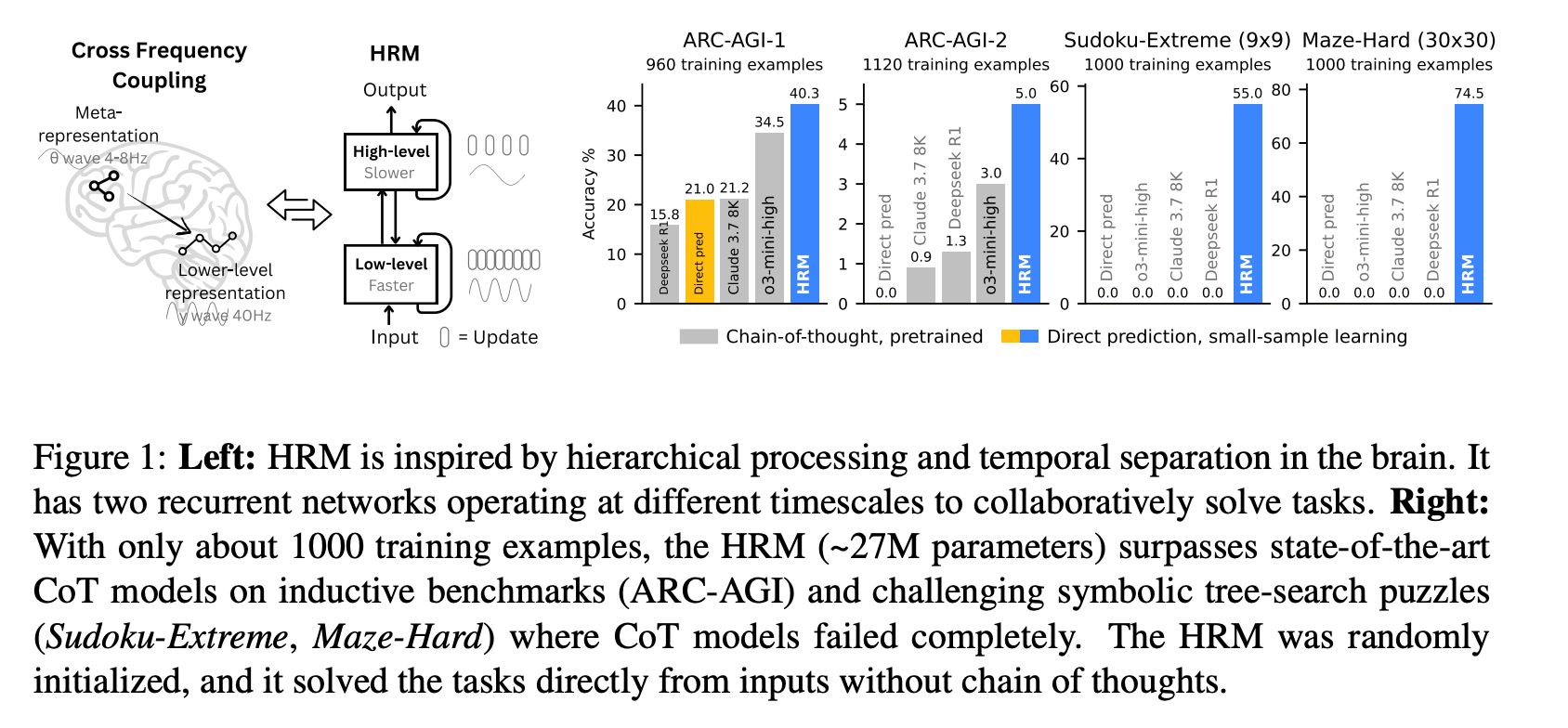
“However, CoT for reasoning is a crutch, not a satisfactory solution. It relies on brittle, human-defined decompositions where a single misstep or a misorder of the steps can derail the reasoning process entirely.”
“Towards this goal, we explore “latent reasoning”, where the model conducts computations within its internal hidden state space. This aligns with the understanding that language is a tool for human communication, not the substrate of thought itself17; the brain sustains lengthy, coherent chains of reasoning with remarkable efficiency in a latent space, without constant translation back to language. However, the power of latent reasoning is still fundamentally constrained by a model’s effective computational depth. Naively stacking layers is notoriously difficult due to vanishing gradients, which plague training stability and effectiveness.”
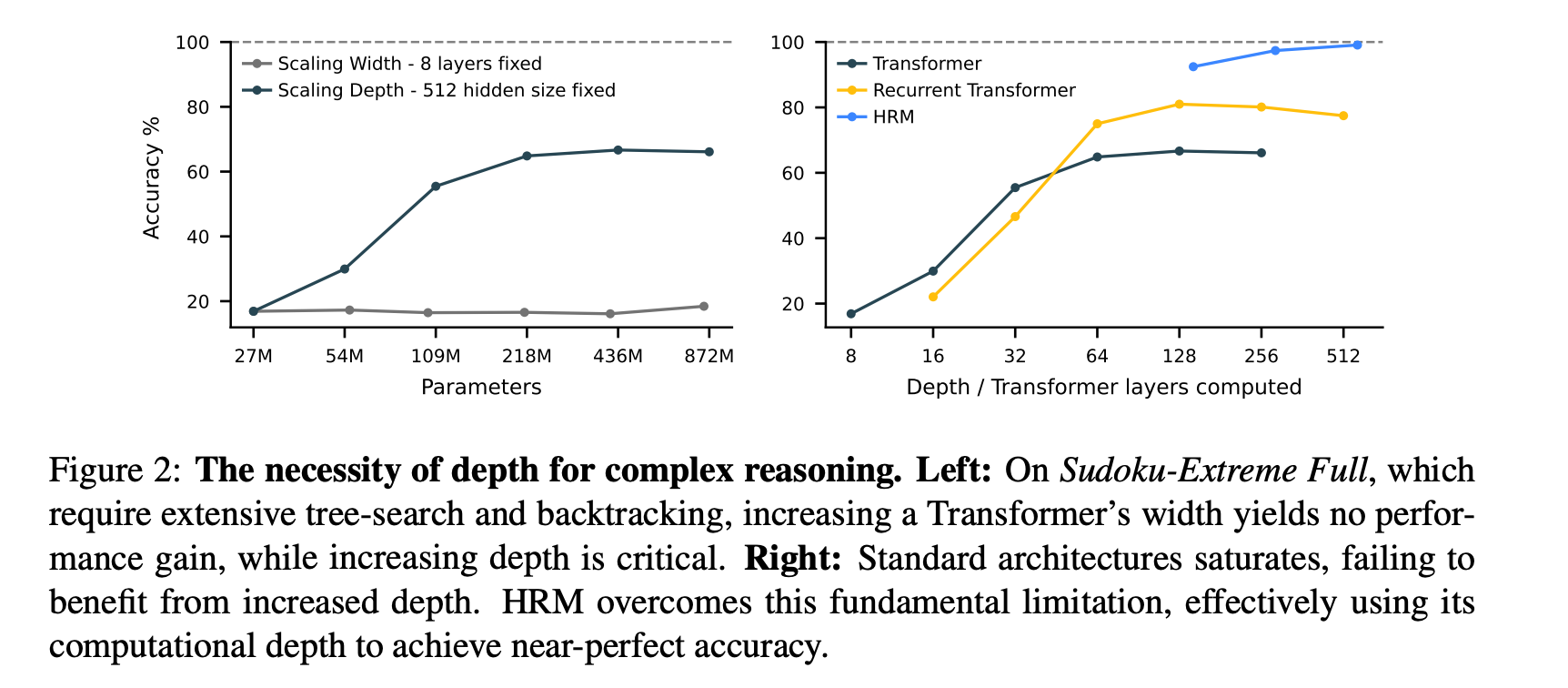
“Although convergence is crucial for recurrent networks, standard RNNs are fundamentally limited by their tendency to converge too early. As the hidden state settles toward a fixed point, update magnitudes shrink, effectively stalling subsequent computation and capping the network’s effective depth. To preserve computational power, we actually want convergence to proceed very slowly–but engineering that gradual approach is difficult, since pushing convergence too far edges the system toward instability.”
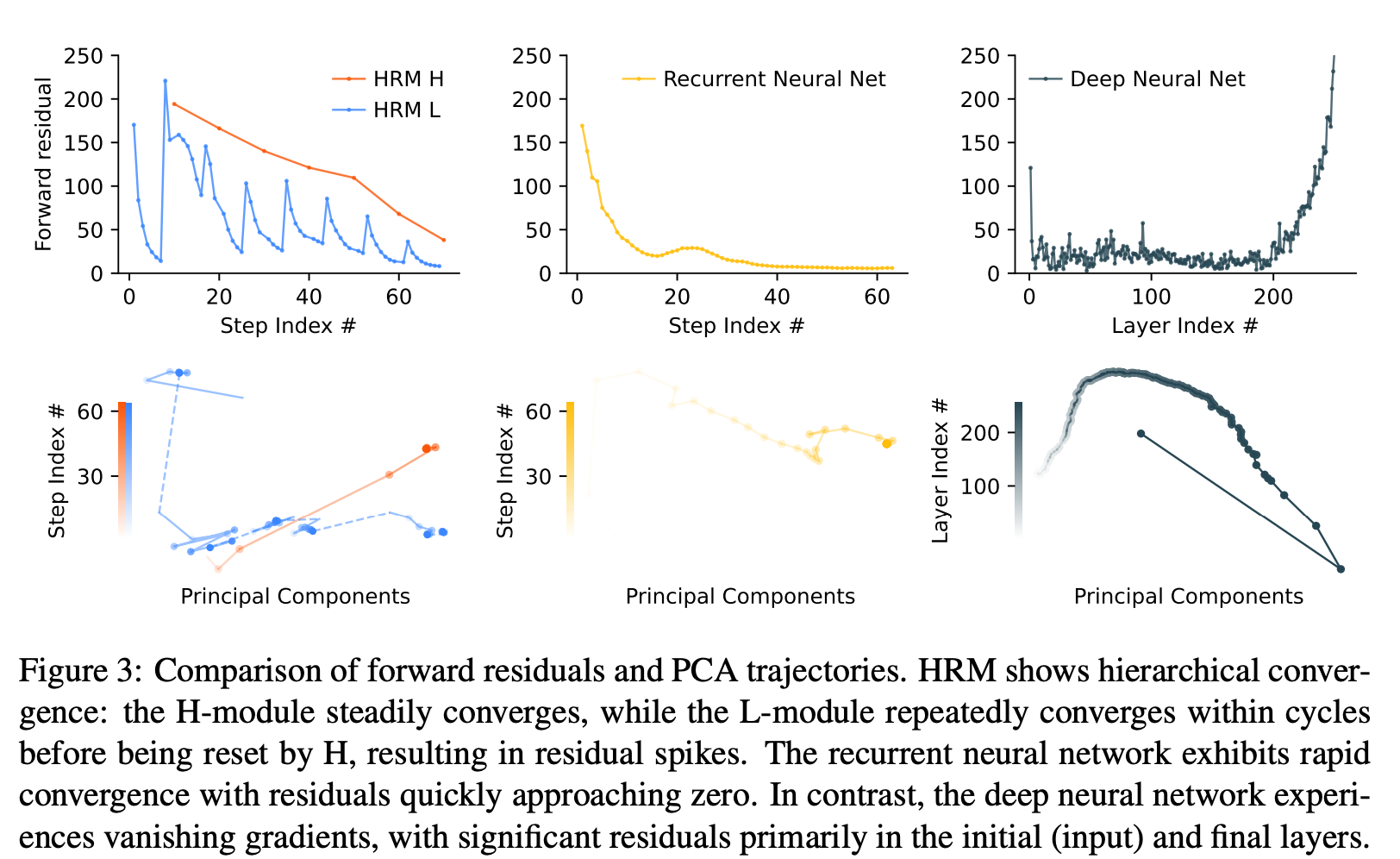
“The crucial aspect of this procedure is that the hidden state z^m is “detached” from the computation graph before being used as the input state for the next segment. Consequently, gradients from segment m + 1 do not propagate back through segment m, effectively creating a 1-step approximation of the gradient of the recursive deep supervision process. This approach provides more frequent feedback to the H-module and serves as a regularization mechanism, demonstrating superior empirical performance and enhanced stability in deep equilibrium models when compared to more complex, Jacobian-based regularization techniques.”
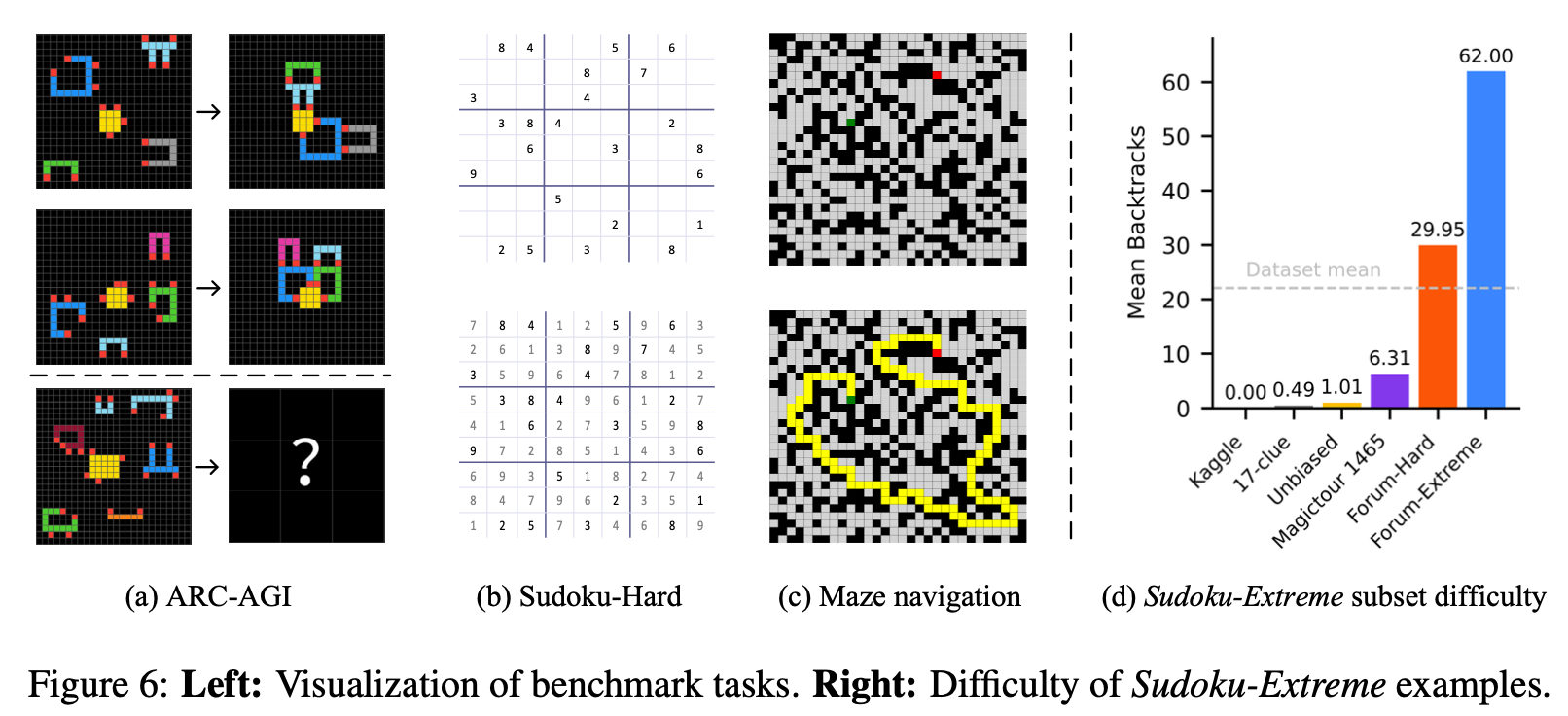
“Although the brain relies heavily on hierarchical structures to enable most cognitive processes, these concepts have largely remained confined to academic literature rather than being translated into practical applications. The prevailing AI approach continues to favor non-hierarchical models. Our results challenge this established paradigm and suggest that the Hierarchical Reasoning Model represents a viable alternative to the currently dominant chain-of-thought reasoning methods, advancing toward a foundational framework capable of Turing complete universal computation.”
Wang, G., Li, J., Sun, Y., Chen, X., Liu, C., Wu, Y., ... & Yadkori, Y. A. (2025). Hierarchical Reasoning Model. arXiv preprint arXiv:2506.21734.
https://arxiv.org/pdf/2506.21734
KIMI K2 Tech Report
Open Weights!
“We introduce Kimi K2, a Mixture-of-Experts (MoE) large language model with 32 billion activated parameters and 1 trillion total parameters.”
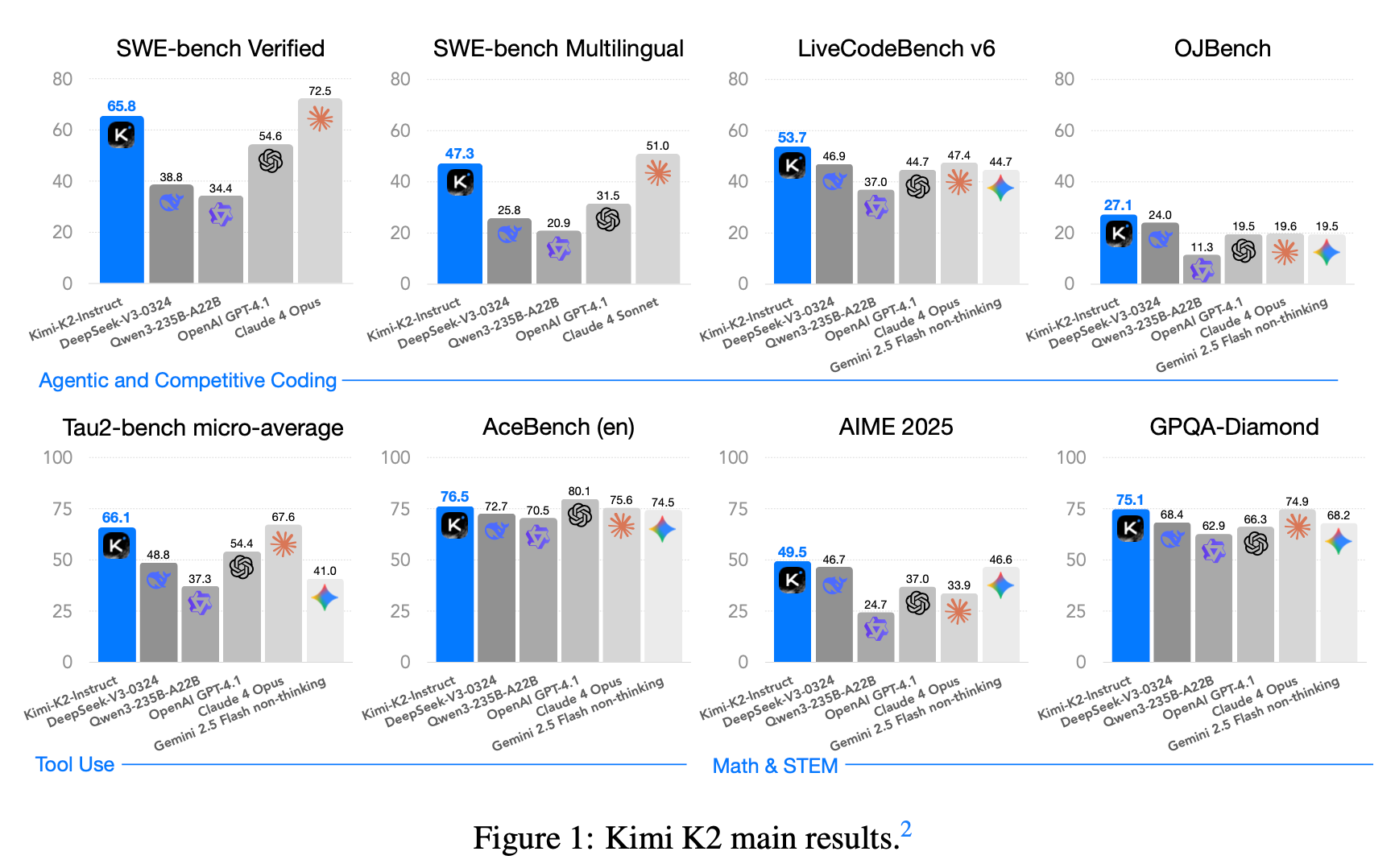
“Manual Review We incorporated human review into the evaluation process. To minimize subjectivity problem, we conducted multiple rounds of review and assigned the same reviewer to evaluate all cases within a given test set to ensure consistency and reduce variability in judgment.”
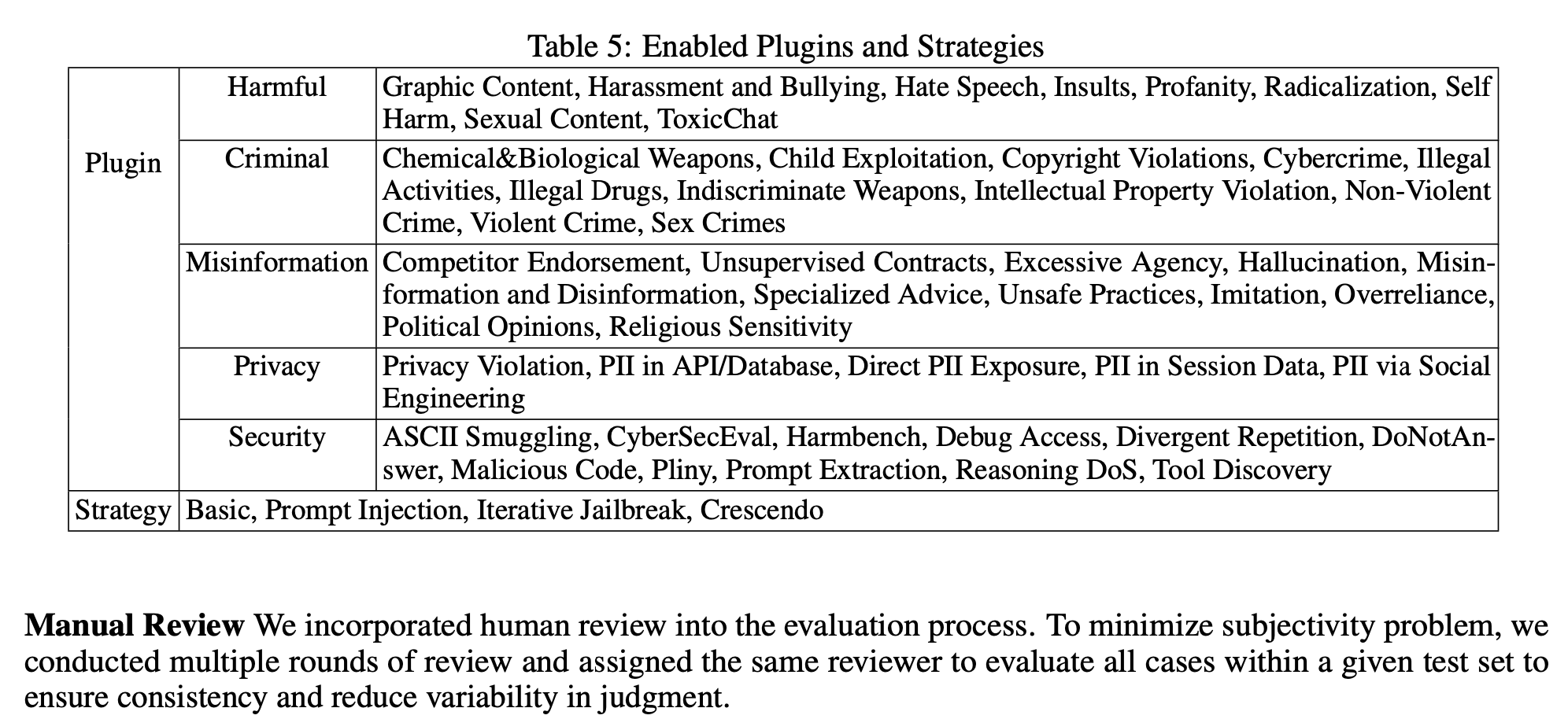
“We introduced Kimi K2, a 1T-parameter open-weight MoE model built for agentic intelligence. Leveraging the token- efficient MuonClip optimizer and a 15.5T-token high-quality dataset, Kimi K2 achieves stable, scalable pre-training. Post-training combines large-scale synthetic tool-use data with a unified RL framework using both verifiable rewards and self-critic feedbacks. Kimi K2 sets new state-of-the-art on agentic and reasoning benchmarks, establishing itself as the most capable open-weight LLM to date.”
https://github.com/MoonshotAI/Kimi-K2/blob/main/tech_report.pdf
AI Can’t Replace Free Markets
“Imagine artificial intelligence controlling the economy.”

“Economic coordination isn’t a problem to be solved by computing an optimal answer. It emerges from the decentralized decisions and adjustments made by billions of economic actors—each with their own plans, preferences, and knowledge—in an ongoing, evolutionary process. Certain rules and institutions are essential for transforming decentralized decision-making into orderly and socially beneficial outcomes. The three Ps—property rights, prices, and profit and loss—provide the three Is—information, incentives and innovation.”
“Prices also function as decentralized feedback loops. “A price is a signal wrapped up in an incentive,” note Tyler Cowen and Alex Tabarrok.”
“The belief that AI can achieve comparable results to free markets, let alone surpass them, reflects a misplaced confidence in computation and a misunderstanding of the price system. The problem for the would-be AI planners is that prices don’t exist like facts about the physical world for a computer to collect and process. They arise from competitive bidding over scarce resources and are inseparable from real market exchanges. Moreover, prices aren’t fixed inputs to be assumed in advance. They are continually being discovered and formed by entrepreneurs testing ideas about future consumer wants and resource constraints.”
“AI can process vast amounts of data—but always from the past. Economic action, by contrast, is forward-looking. An algorithm may extrapolate trends, but it can’t anticipate innovation and changing tastes. It can’t discover what hasn’t been imagined.”
“AI’s economic champions confuse data processing with discovery and overlook how incentives shape the data AI receives.”
“Economics and engineering don’t substitute. If allocation becomes a technical problem and AI the solution, society may shift talent from exploration to optimization. But prosperity depends on experimentation, not blueprint execution. Economists should embrace what Hayek called catallaxy—order born from exchange among strangers, each pursuing new ends with evolving means. Centralized intelligence freezes that process, replacing dynamic evolution with rigidity.”
https://www.wsj.com/opinion/algorithms-cant-replace-free-markets-artificial-intelligence-dd3b428f
Tracking AI
A relatable way to track?
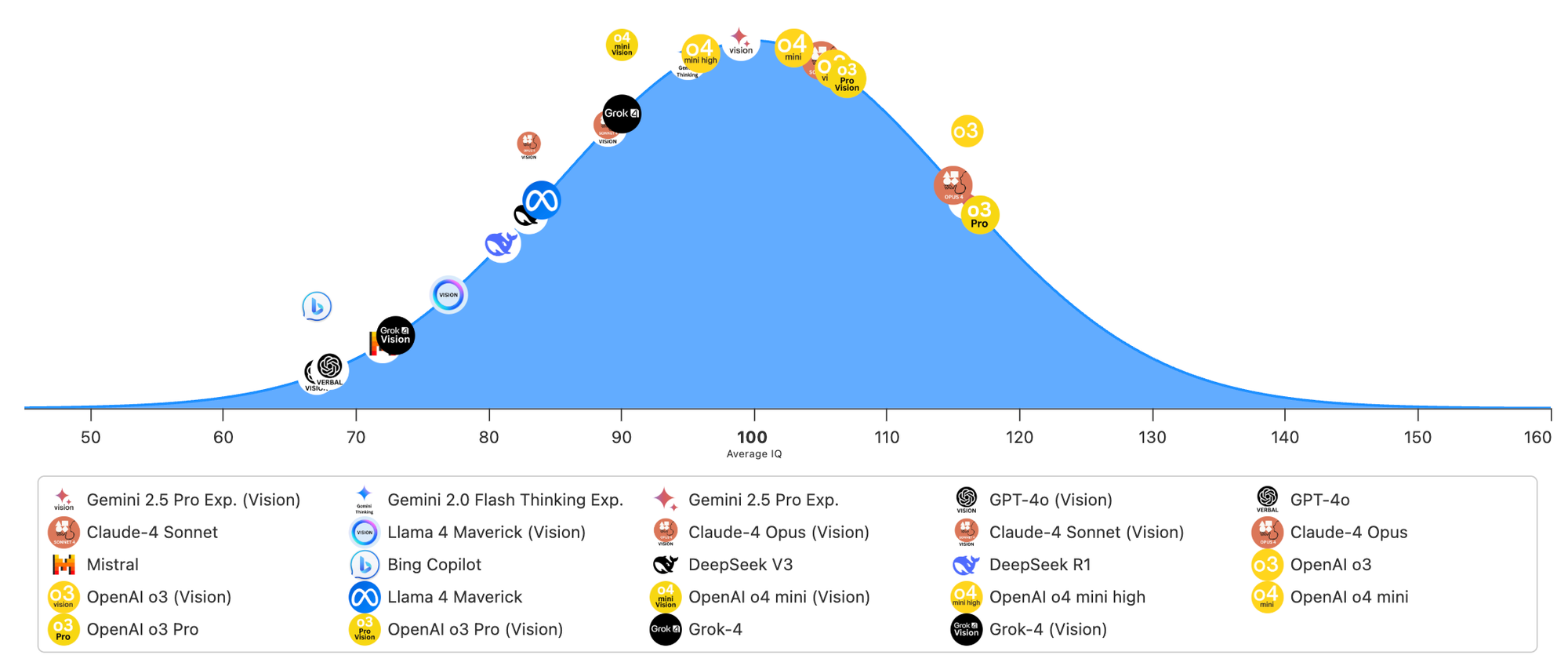
https://www.trackingai.org/home
Contesting Authority to Adjudicate Misinformation
Who’s to say?
“This article yields three main insights into contention about misinformation. First, claims and counterclaims about misinformation are proxy fights over power, which accounts for why contention over social media posts can become so virulent. At issue is not simply whose facts are right but also who should have the authority to decide which facts are right and, ultimately, who has the right to engage in the public sphere. The stakes become apparent when incumbents advocate for the spreaders of misinformation to be downgraded in social media feeds or de-platformed and when challengers target incumbents through ad hominem attacks, conspiracy theories, and intimidation.”
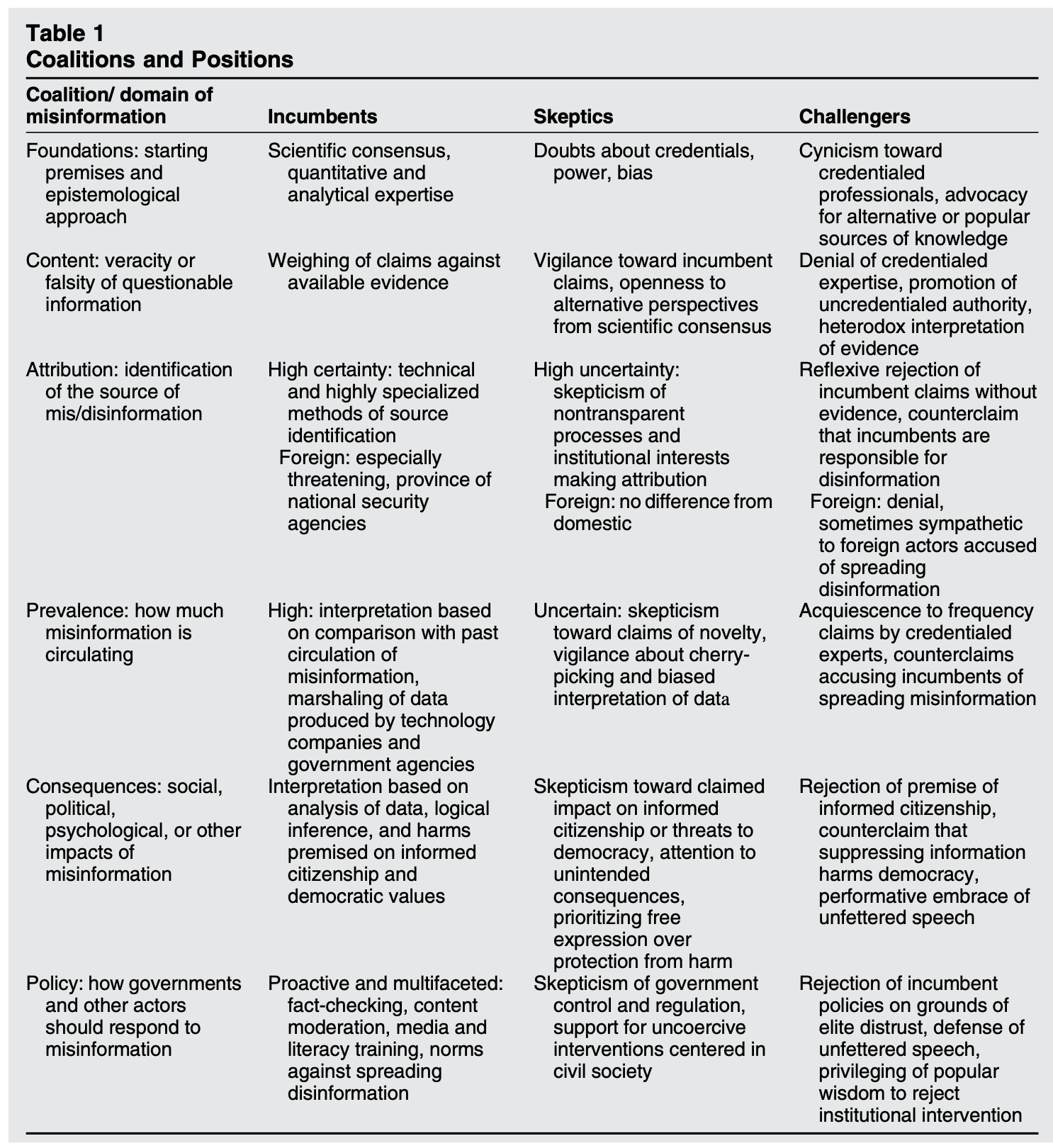
“Second, clashes that are apparently political are none- theless fought in epistemological and methodological trenches. At issue is what kinds of knowledge are best suited to make claims about misinformation. Incumbents assert authority based on training and standardized pro- cedures. Challengers favor populist sources of knowledge —the idea that laypeople can access the truth—over “elitist” scientific evidence or promote the claims of alter- native or uncredentialed “experts.””
“Third, although contenders may act on sincerely held philosophical principles, they also have self-serving motives when it comes to how the circulation of mis- information affects them. Incumbents have an interest in minimizing unwarranted criticism not only because it could degrade the quality of democratic discourse but also because it threatens to undermine their cultural and political power and their ability to enact their favored policies. As the frequent targets of illiberal populists, incumbents have an interest in accusing their accusers of spreading disinformation, even when the evidence for such accusations is uncertain (Uscinski 2023). By the same token, illiberal challengers are also motivated by self- interest: they stand to benefit from (particular forms of) misinformation.”
“The balance of power has changed, but the discursive struggle continues.”
Radnitz S. (2025) Contesting Authority to Adjudicate Misinformation. Perspectives on Politics. Published online 2025:1-23. doi:10.1017/S1537592725102028
Reader Feedback
“It isn’t likely that an automaton or a bubble sort is intelligent.”
Footnotes
The Burger King is gonna be pissed

Never miss a single issue
Be the first to know. Subscribe now to get the gatodo newsletter delivered straight to your inbox
